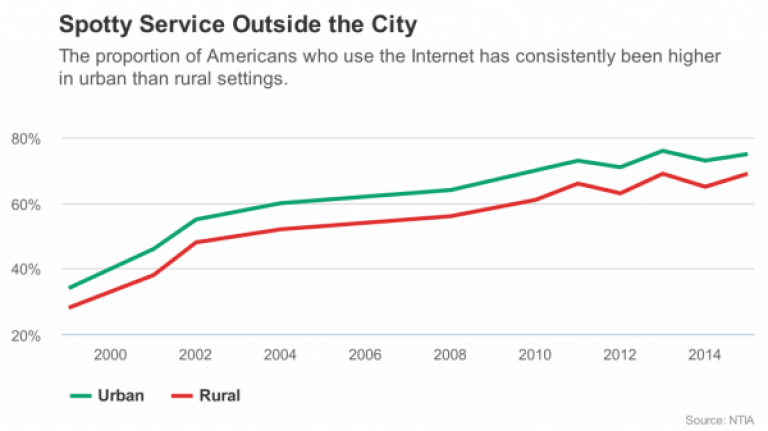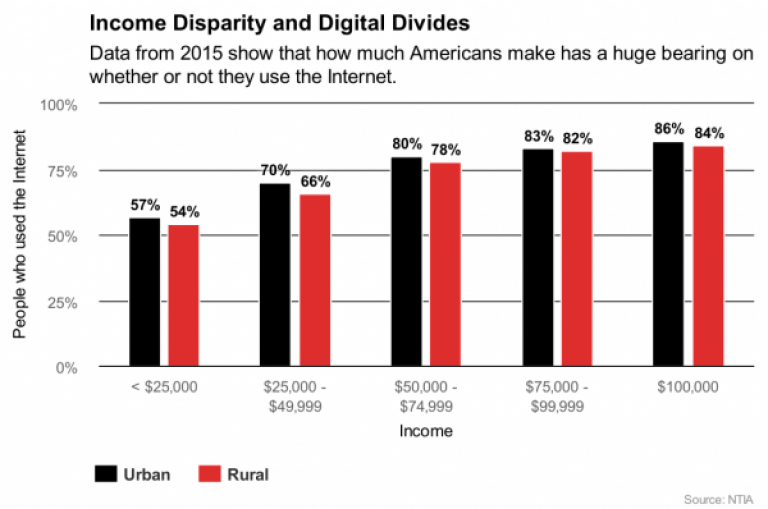The Next President Will Inherit America’s Embarrassing Digital Divide
The high price of broadband in the U.S. plays a big role in keeping people offline.
by Mike Orcutt
Source: MIT Technology Review
As long as the Web has been around, we’ve heard about the digital divide. And despite decades of efforts to fix it, it stubbornly remains, even after certain groups—including senior citizens, minorities, and Americans with lower levels of education—have increased their levels of Internet access.
The gap in Internet access persists largely because rural residents generally have fewer options for Internet service. Broadband providers get far more bang for their infrastructure buck by building in cities, where a new bit of fiber, say, will reach far more potential customers than it would out in the sticks. And this low rate of Internet use is either a cause or an effect of another trend in consumer technology: people in rural areas also use fewer computers and mobile devices.

People on both sides of the political aisle agree that expanding Internet access would be good. In the presidential campaign, Donald Trump hasn’t offered specifics about Internet policy, while Hillary Clinton has set a clear goal, declaring that by 2020, “100 percent of households in America will have the option of affordable broadband that delivers speeds sufficient to meet families’ needs.” But as the chart above shows, that would require her administration to somehow overcome the persistent disparity between the rates of Internet use in cities and rural areas.

Earlier this year, policy analysts at the National Telecommunications and Information Administration suggested that one way to close the gap might be to give rural people digital literacy training so they can see how the Internet would be useful to them. That’s a nice idea, but making broadband access more affordable is likely to have a much bigger impact. Regardless of where people live, families that don’t make much money are far less likely to use the Internet. And compared with what’s available in other countries, service plans for midrange broadband in the U.S. are pretty expensive: about $52.50 per month on average. In France, which has the cheapest comparable plans, the rate is a bit less than $19 a month.
